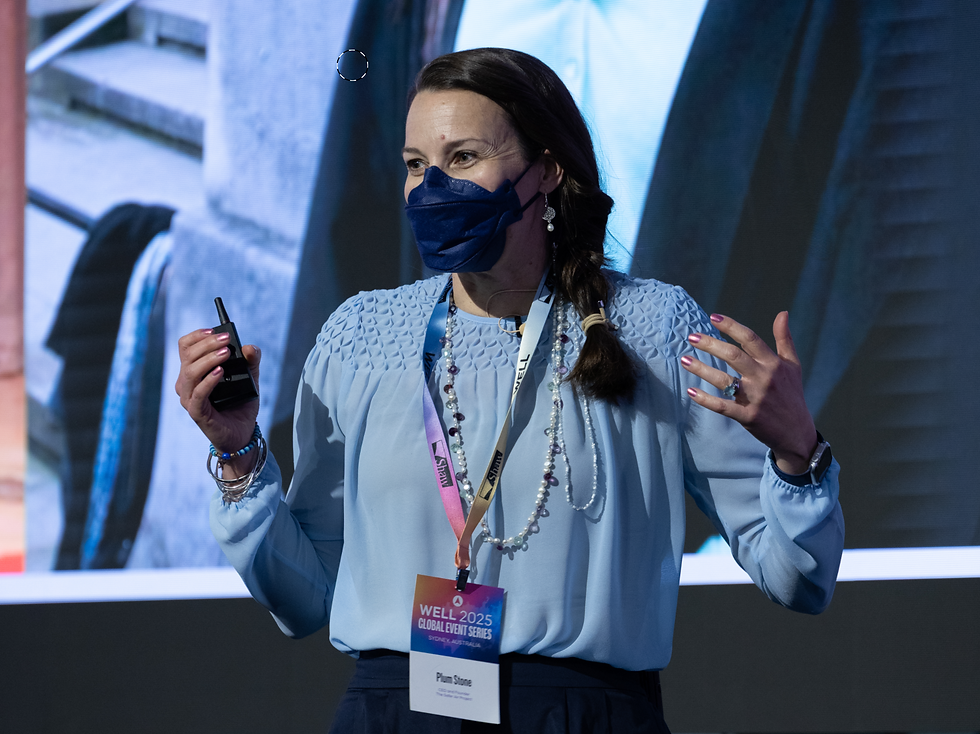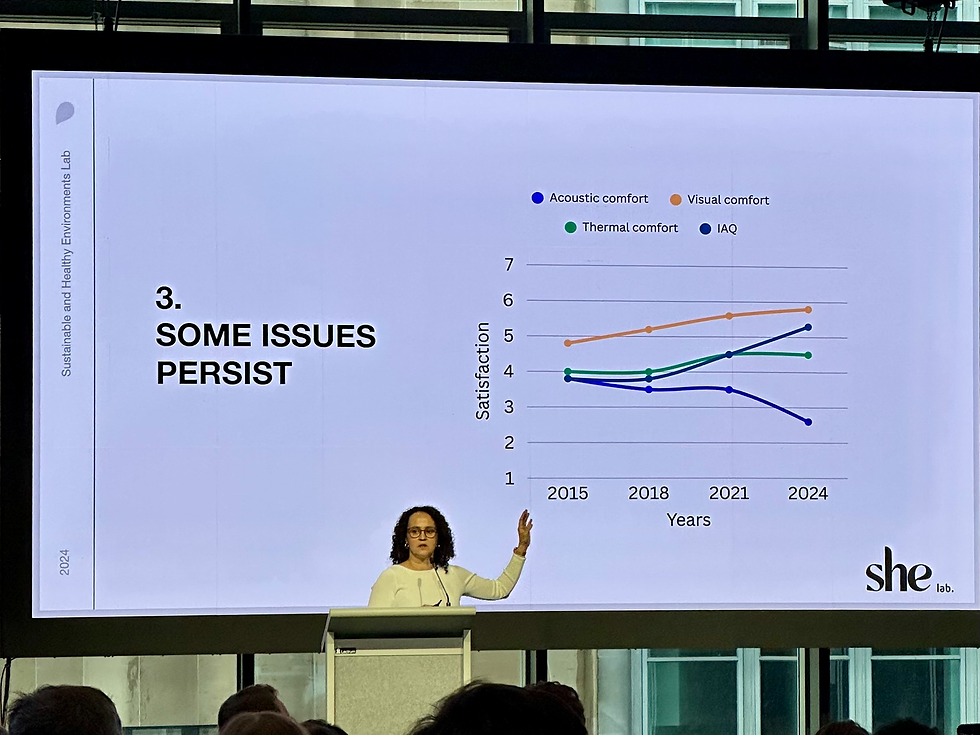Reflections on WELL Summit Sydney: Air, Equity and ESG in Practice
- LCA link
- Aug 29
- 4 min read
Written by Francisco Carbajal
Last week I attended the WELL Flagship Summit in Sydney which was a change of rhythm from what I usually find myself surrounded by. Much of my time is spent immersed in conversations about embodied carbon, so spending a day focused on health, equity and the lived experience of buildings was a welcome change of pace. The sessions throughout the day focused strongly on indoor air quality, equity, and the evolving meaning of ESG. It was a reminder that sustainability is not only about emissions, but also about how people experience the spaces we create.

A highlight of the day was hearing Plum (Victoria) Stone, founder of the Safer Air Project. Living with long Covid, she described how something as basic as breathing in shared indoor spaces had become a barrier to everyday participation for her family. For people with chronic conditions, the safety of indoor air can determine whether they can attend a birthday party, take public transport, or access healthcare. Her message reframed air quality as an accessibility and equity issue rather than just a technical concern. Everyone breathes the same air, but not everyone experiences the same consequences.

The panel on indoor air quality reinforced this with evidence. A study from the London School of Economics showed that simply making real-time air quality visible led to a 34% reduction in PM2.5 during occupied hours, because people changed their behaviour. The scale of that impact highlights how awareness itself can be transformative. The panel also reminded us that almost no one in the world currently breathes air that meets WHO guidelines. Even in countries like Australia, where outdoor air quality is relatively good, bushfires and other climate-driven events can shift conditions overnight, exposing how poorly prepared many of our airtight, efficiency-driven buildings are.
Another strong thread was ESG. ESG stands for environmental, social and governance, and it is increasingly shaping how investors evaluate the performance of companies and assets. Not long ago, “social sustainability” meant Friday drinks and gender diversity at panel discussions. Now it is being measured more seriously and more consistently, with frameworks like WELL and platforms like GRESB used to benchmark performance. As one finance leader explained, WELL provides one of the only credible ways to measure social impact in buildings. ESG reporting is no longer just environmental metrics, it now carries expectations that wellbeing, inclusion, and community outcomes can be quantified and linked to long-term value.

Christhina Candido’s keynote grounded these themes in data from a decade of research on high-performing workplaces in Australia. The research showed a clear shift in what people now see as essential in their workplaces. Health and wellbeing, once considered extras, are now baseline expectations. Work–life balance has become a key factor in attracting and retaining staff, often outweighing financial incentives. At the same time, workplace conditions are changing in more subtle ways. Visual comfort has steadily improved with better lighting design and interiors, yet acoustics are becoming a growing challenge in modern open-plan buildings. Even in high-performing spaces, noise remains one of the most common sources of dissatisfaction. Together these findings highlight how benchmarks for workplace design continue to evolve, and how quickly organisations need to adapt.
The Pecha Kucha talks gave further perspective on how wellbeing is being defined in practice. There were stories about modern slavery in construction supply chains, the role of finance in healthier workplaces in Japan, and design for disability that went beyond compliance to create genuinely better experiences for everyone. Examples included a centre for the blind in Mexico that used scent and sound as wayfinding tools, DeafSpace guidelines that demonstrated how accommodating specific needs can improve spaces for all, and autism-friendly campus design that reduced barriers while benefiting wider communities.

The day also touched on product innovation that links environmental and social outcomes. Milliken and saveBOARD jointly released Renasci™, a resilient flooring plank made from carpet and soft-plastics waste and designed for repeat recycling. It doesn’t yet have an Environmental Product Declaration (EPD), but from a carbon perspective it looks game-changing for the flooring industry. By offering a circular solution for short-term flooring that is typically replaced multiple times during a building’s life, it has the potential to cut embodied carbon significantly. I am looking forward to seeing the EPD being released. Watch a short video about the product's story.
Air was not the only subject of the day, but for me it was one of the strongest. From Plum Stone’s story about living with long Covid to the panel discussion on measurement and resilience, it became clear that indoor air quality can no longer sit in the background.
Although the conversation was not about decarbonisation, the summit placed attention on the social side of sustainability: equity, inclusion, workplace wellbeing, and the lived experience of buildings. It Reminded me that sustainability is also about fairness and inclusion and that progress is not only measured in carbon reductions, but also in the everyday conditions that make spaces healthier, fairer and more accessible.








